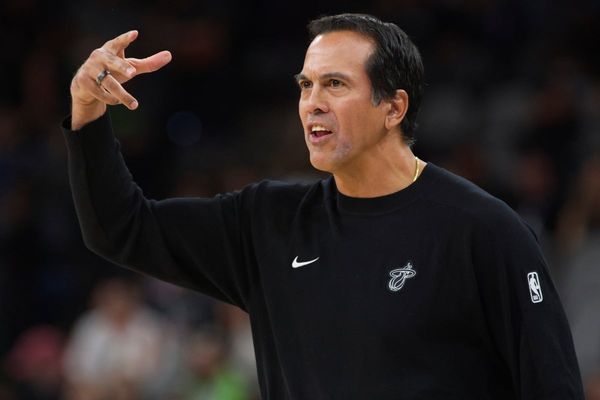
- President Donald Trump ordered all federal workers back into the office five days per week via an executive order. Other employers like JPMorgan, Amazon, and AT&T have brought down the RTO hammer, much to workers’ dismay.
America’s largest employer just ordered its workers back into the office five days a week. On Donald Trump’s first day in the Oval Office, he signed an executive order mandating all federal employees return to their cubicles. The move will affect nearly 3 million people employed by the U.S. government, many of whom have operated on a hybrid or a fully remote basis for years.
“Heads of all departments and agencies in the executive branch of Government shall, as soon as practicable, take all necessary steps to terminate remote work arrangements and require employees to return to work in-person at their respective duty stations on a full-time basis, provided that the department and agency heads shall make exemptions they deem necessary,” the executive order said.
The U.S. government is just one of many organizations prying workers from their couches and sending them back into the office. About 90% of businesses said they planned to implement RTO policies by the start of 2025, according to a 2023 report from Resume Builder. Employers including Goldman Sachs, Amazon, AT&T, JPMorgan, Google, EY, Microsoft, and Apple have all shifted away from work from home, to name a few. And it’s already taken shape among digital employees: In 2024, about 75% of employees with jobs that could be done remotely said their boss had put in-person mandates in place, up from 63% in early 2023, according to a recent survey from the Pew Research Center.
CEOs claim working remotely stifles creativity and innovation, diminishes productivity, and disrupts connectivity. Those myths have since been debunked. But despite employees' dismay—nearly 73% of Amazon’s employees considered quitting in response to its controversial five-days-in-office crackdown, according to a poll of 2,585 of the company's workers—RTO mandates continue to live on.
The WFH wars have been waged for the better part of four years now, since pandemic-era restrictions of social distancing and masks have been lifted. But does Trump's executive order move the needle of power away from employees?
Not the tipping point—riding the wave of the WFH wars
Experts who spoke with Fortune conceded that Trump’s mandate on federal workers will have a broader influence on other organizations’ WFH policies. But overall, the move is just riding the rolling wave of anti-WFH policies.
Sean Puddle, the managing director for Robert Walters’ North America operations, told Fortune that Trump’s RTO decision could serve as a “go-ahead” for others mulling over in-person mandates. However, he’s not certain this decision is a turning point; big employers have been rolling out the policies for years.
“I don't know if there's necessarily a sort of silver bullet answer to this. I think it's probably going to be an evolution, like anything,” Puddle said, explaining that big businesses questioning the viability of bringing their staffers back to in-office will now use the U.S. government’s RTO mandate as a touchstone and excuse to roll out the policy. “They’re probably leaning on the fact that other people are doing it now, too.”
“I don't necessarily think that this is a tipping point. I think it's continuing on with the trend that we've been seeing from employers,” Kyle M.K., talent strategy advisor for Indeed, told Fortune.
And this could be a cost-cutting mechanism, M.K. pointed out. For example, after announcing his own RTO mandate, the Department of Government Efficiency’s (DOGE) head Elon Musk embraced the thought that employees would quit. In a WSJ opinion piece, Musk and former DOGE co-leader Vivek Ramaswamy wrote about "a wave of voluntary terminations that we welcome: If federal employees don't want to show up, American taxpayers shouldn't pay them for the Covid-era privilege of staying home."
M.K. made the connection between DOGE’s sensibility on the situation and the broader U.S. government’s approach with the in-office policy. “It is a big deal, but it's not terribly surprising," he said. "Understanding what the Trump administration is trying to achieve with the federal workforce, with the whole Department of Government Efficiency, trying to reduce their workforce.”
Who is projected to win the fight—workers or employers?
Experts told Fortune that employees do have power in the WFH wars—and it’s only projected to grow in the coming years. Indeed, employers may call the shots, but they’re not in control of how staffers react.
“I think workers always have the most influence and power over the labor market. If someone doesn't want to work in an office, then they will choose not to work in the office,” M.K. said. “That might take some time where they have to find new work. But ultimately, they are in charge of their own time and how they choose to use it.”
The Indeed talent strategy advisor also pointed out demographic shifts that play a major hand in these WFH wars. America’s workforce is aging, and Gen Z and millennials are poised to take over a large part of the labor force in the coming years. These generations value flexible schedules more than others—after all, half of Gen Z said they would quit their jobs if forced into the office over three days a week, according to a 2024 report from Personio. And in a future with reduced applicant options, they’ll hold greater power in who they choose to work for. At that point in time, employers who don’t have hybrid or remote work may be out of luck.
“Who’s going to win the work from home wars? It comes down to the fact that we've got an aging workforce. In less than five years, Gen Z and millennials will be a majority of the workforce, and those two generations have identified that flexibility is very important to them,” M.K. said. “So employers who struggle to keep up [with flexible schedule demands] will also struggle to operate in that world where a majority of the workers determine where and how they want to work.”
Puddle has also witnessed the swing of power between employers and workers over the years, working at a talent solutions agency. He said staffers have power in this very moment—but that bosses currently have more of an upper-hand, in a tight labor market. But give it some time, and staffers will seize control of the moment.
“We went from being very candidate-driven just after COVID. The market changed a couple of years ago, and employers started to get a bit more of a say in terms of the hiring process, as there were less jobs than people,” Puddle said. “That shift is going to come back at some point, and it will start to become candidate-driven again … The pendulum is always moving.”







